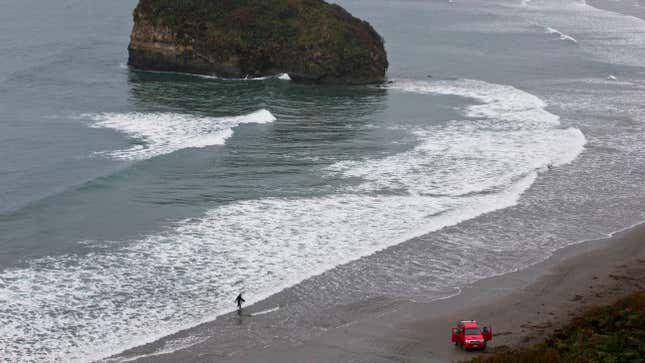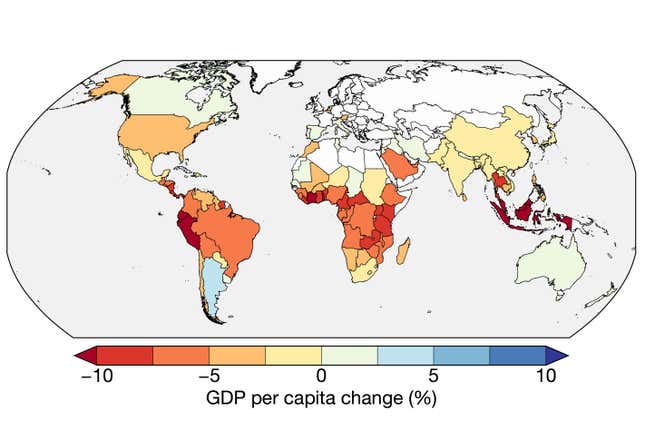
El Niño years are rough: They come with an increased likelihood of diseases spreading, toxic algae blooms, and drought conditions. In a new study published in the journal Science, researchers looked at how the financial toll of this cyclical global shift can persist for years and result in the loss of trillions of dollars.
El Niño is marked by warming ocean temperatures in the Pacific and weaker trade winds, a combination that alters global weather patterns. It can last anywhere from a few months to a little over a year, though this isn’t a hard rule, according to the National Weather Service. In the new work, researchers examined global economic activity following the 1982-1983 and 1997-1998 El Niño periods. They looked at economic growth before and after those events and especially at GDP in the years afterwards.
“El Niño events persistently decrease economic growth,” the study authors wrote.
The world lost $4.1 trillion and $5.7 trillion from the 1982-1983 and 1997-1998 El Niño events, respectively. Data also suggested that some countries could see economic impacts for up to 14 years after an El Niño event. By looking at previous El Niño periods and the following economic effects, the researchers projected that the global economy could lose about $84 trillion total by the end of this century.
Christopher Callahan, a Ph.D. student at Dartmouth and a lead author of the study, said that though he expected several countries to be affected by El Niño conditions, the financial losses were larger than expected. “There was no guarantee when we went into this study that the numbers would be as large as they are. We did not know how long the El Niño effect would last,” he told Earther. “It was a real surprise to us and a real indication that our economies and our societies are a lot more sensitive to climate variation than we realized before.”

The study looked at each country’s overall economic growth, but not specific sectors or regions. Callahan told Earther that they drew from previous work that has looked at particular economic impacts that will mess with a nation’s GDP. “We know that extreme rainfall in Peru and Ecuador can damage infrastructure,” he said. “We know that there are droughts and wildfires in Indonesia and the Philippines during El Niño. Those can depress labor productivity. We know that agricultural disruptions are closely tied to El Niño.”
The study found that El Niño events are most likely to affect the GDP of lower-income countries in the tropics. For example, modeling showed that “Brazil’s GDP per capita would have been 5% larger in 2003 if the 1997-98 El Niño event did not occur.”
“High income countries also experience significant negative effects,” the study noted. This is especially true when higher income countries experience more rainfall or more drought due to El Niño.
According to NOAA, El Niño is on track to form by this summer. This event could cost the world economy $3 trillion by the end of this decade, notes a Dartmouth Collect release about the study. And the World Meteorological Organization said this week that a combination of pollution and conditions from El Niño have a high probability of making the next half decade the warmest period on record.
According to Callahan, there are still questions as to how climate change is going to affect El Niño and La Niña years. He stressed the importance of lowering emissions and conducting more research on how climate change will alter global cycles.
“Moving forward, thinking about the effects of climate change on El Nino and the tropical climate, we need to have a much better handle on how those processes are going to evolve and what climate change is going to do to them to get a handle on what these future costs might look like,” he said.
Want more climate and environment stories? Check out Earther’s guides to decarbonizing your home, divesting from fossil fuels, packing a disaster go bag, and overcoming climate dread. And don’t miss our coverage of the latest IPCC climate report, the future of carbon dioxide removal, and the invasive bugs you should squash on sight.